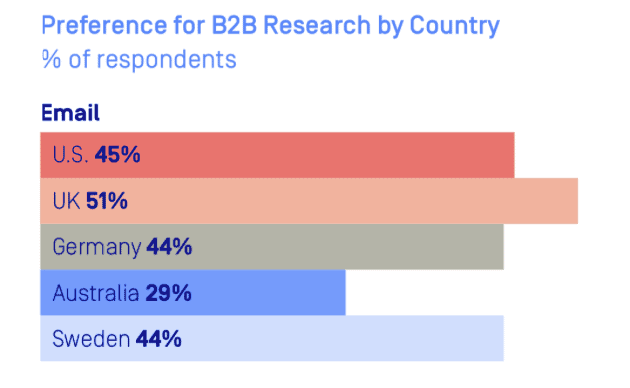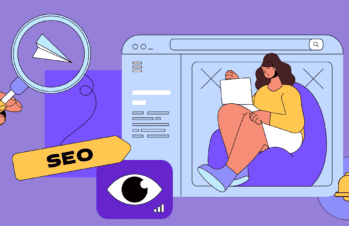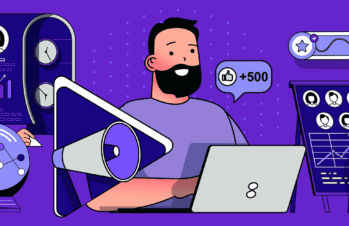B2B ecommerce used to barely register on the scale of “important things for your B2B brand to focus on.”
Until recently, ecommerce was generally relegated to the B2C realm—but today, as B2B’s digital footprint is overlapping more and more with its B2C cousin, B2B ecommerce is becoming a force to be reckoned with.
Customers today expect the same ease of purchase and seamless user experience when it comes to purchasing office telecom equipment as they do when they buy a new kitchen gadget. Deliver it, and you’ll have customers who will come to you first. Fail to do so, and you’ll find that even your existing customers will start dropping off.
So how do you create the kind of B2B ecommerce experience that leaves your customers wanting more?
Here are 5 things you must know.
The B2B ecommerce market is projected to be twice as big as B2C in 2020 alone.
If you thought B2B ecommerce was a niche, think again.
The B2B ecommerce market isn’t just as large as B2C—it’s fully double the size. And that means that your customers are expecting you to offer ecommerce options.
Part of this is because Millennials have become the most prominent generation in the workforce, as this generation is coming into its prime working years. In fact, 73 percent of Millennials are involved in purchasing or purchasing decisions at their companies, according to a new report by Merit.
Millennials aren’t digital natives, like Gen Z, but they are adept at using new technologies and have higher expectations for being able to conduct business online, as opposed to the older Gen X and Boomers. As Millennials have moved up in their careers, they’ve exerted more and more influence over the way business is conducted.
SEO is critical for increasing your B2B ecommerce store’s reach.
While SEO is hugely important for any B2B site (or B2C, for that matter), SEO is perhaps even more important for B2B ecommerce.
Here’s why: Organic traffic is typically the largest percentage of traffic a website receives. However, that doesn’t mean it will be the largest source of conversions—and tons of traffic without conversions won’t do you much good.
To get your SEO where it needs to be, you’ll need to implement a few B2B SEO strategies to get you started.
A solid keyword strategy
Creating a keyword strategy involves brainstorming the terms that your customers and clients use to find your site.
You can find a lot of these via Google Analytics or whichever analytics program your brand uses—just check the keyword report and include the most popular ones on your list of keywords.
If there are keywords you’re not currently ranked for, but would like to branch into, make a list of those as well. For instance, if you’ve got a new B2B product line of AI chatbots, and you’ve never sold chatbots before, you’ll want to include as many keywords around chatbots as you can.
Don’t forget to also include jargon, acronyms, or other industry terms that could help customers find your ecommerce store.
Social sharing buttons
Social sharing buttons, which allow users to share one of your pages or product/service listings to a social media site, can help increase your site’s visibility, ultimately upping your traffic.
Try to include these not only on category pages, but on individual product listing pages, as well. The main ones are Facebook, Twitter, Pinterest, and Instagram, although there are additional industry- or niche-specific platforms that you may want to explore, as well.
Optimized metadata
Metadata—quite literally, “data about other data”—is another critical element of optimizing your B2B ecommerce store.
Metadata includes everything from your image alt-text (the text that shows up if a browser can’t download an image; it’s also the text a screen reader will read), to your page descriptions, to the tags you use for your products.
You need content for every stage of your funnel.
A common mistake among B2B marketers is to focus too heavily on content for the early stages of the funnel—awareness and consideration—while neglecting the later stages.
This may not seem like a big issue. After all, you want to get your brand’s name out there as much as possible, and content is one highly effective way of doing that.
However, if you’re focusing too heavily on the early stages of the funnel, you’ll find potential customers dropping off before you’re able to close the sale. This is not just because it’s a “good idea” to have content for every stage—it’s because B2B buyers today expect it.
As more Millennials enter the ranks of B2B buyers and decision-makers, they’re bringing the digital expectations they’ve developed as consumers into the workplace and buying process. They don’t want to have to contact a salesperson every time they have a question—in fact, they’re a lot more likely to simply drop your brand and move to a different one if they can’t find the information they need on their own.
So what does content for the rest of the sales funnel look like?
Here are a few examples:
- FAQ sections
- Troubleshooting resources for existing customers
- Educational resources to help existing customers make the most of your product/service
- Comparisons and reviews for customers in the Intent stage
- Case studies and testimonials for customers in the Consideration stage
- How-to and intro videos for recent purchasers
Use email marketing to your advantage.
Email marketing is one of the most powerful tools in a B2B organization’s toolbox.
It’s easy to think that most of the emails you send to clients and potential clients will end up in their Trash, but actually, b2b buyers want more email from you.
According to research by Episerver, 54 percent of b2b decision-makers want b2bs to communicate with them more frequently via email. In addition, 45 percent of U.S. b2b decision-makers prefer to learn about a company via email more than any other channel.

Source: Episerver B2B Digital Experiences Report 2019
And yet despite these numbers, 59 percent of b2b brands don’t use email marketing at all. Among the brands that do, the average number of email communications sent is only one every 25 days.
Something else to consider is that, like content, email has generally been used as a top-of-the-funnel approach.
Newsletters, downloadable content, and promotions are all good examples of this kind of content. The idea for each is that a lead or perhaps a client who hasn’t converted in a while will see your brand’s name in their email, remember who you are, and hopefully click on the email to see how your employees have been helping their community, or what new product you’re offering, or what the webinar you’re promoting is about.
If you move them down the funnel, that’s excellent—but most brands aren’t targeting their emails closely enough to make this a probability.
If you have a promotional email, for example, that offers a free consultation on a new service you’re offering, you might send it to your entire list with the primary goal of getting more eyes on your brand. That’s fine—but let’s look at how you could increase the effectiveness of this email by using it to actually move clients down your sales funnel, so they ultimately convert.
One way would be to create segmented email lists and adapt the email to each.
For existing customers, you could include a “thank you for your business” message and give them a special deal you’re not offering others. That could be a larger discount, longer period of time to take advantage of the sale, or a sneak peek of your new product or service, among others.
The right platform is key.
With all the B2B ecommerce platforms available, it’s easy to simply choose one that sounds good and get to work.
However, the right platform can make or break your B2B ecommerce store. In order to make the right choice, you’ve got to consider exactly what your needs are. This includes asking yourself questions like:
- Do my customers need to be able to customize orders on the site?
- Do I need a way for customers to purchase both products and services?
- Is the platform customizable enough to fully match your branding?
- Do customers need to be able to initiate returns?
- How high of a volume of orders does your site have to be able to handle?
- Does the platform offer account management, bulk ordering, and other B2B-centric features?
In some cases, out-of-the-box solutions like Shopify, OpenCart, or WooCommerce will work well for your needs. In others, you may need to hire a developer to adapt a platform for you.
If your platform is difficult to use, clunky, incompatible with mobile, or confusing, customers will drop off midway through the customer journey—and more likely than not, end up at the website of one of your competitors.
B2B ecommerce is growing like crazy, but it’s still a challenging terrain to navigate. Need help? Contact Zen Media to explore a partnership. We’d love to work with you!




